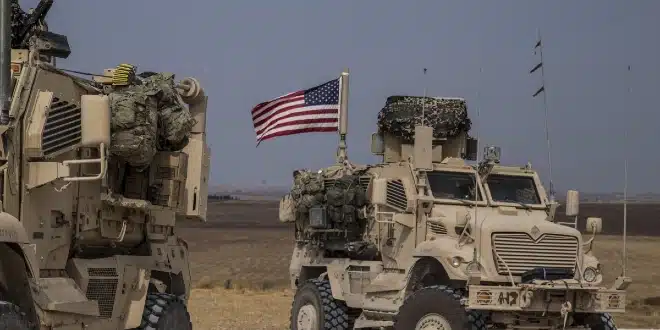The Pentagon has confirmed that the United States will significantly scale down its military presence in Syria, reducing the number of deployed troops to fewer than 1,000 over the coming months. This marks a notable shift in Washington’s long-standing role in countering the Islamic State (IS) in the region.
Pentagon spokesperson Sean Parnell announced the decision on Friday, stating that U.S. forces will be consolidated to specific locations within Syria, though the exact sites were not disclosed. This reduction is described as deliberate and dependent on evolving conditions on the ground.
Despite the drawdown, U.S. Central Command will maintain the ability to carry out targeted operations against IS remnants. Though the group no longer holds territory, it remains active in rural regions of both Syria and Iraq, posing an ongoing threat.
From Full Engagement to Strategic Withdrawal
American forces have been present in Syria for years, initially deployed as part of an international coalition to combat IS after the extremist group seized large areas during the Syrian civil war and expanded into Iraq. Backed by U.S. airpower and military advisers, the Kurdish-led Syrian Democratic Forces (SDF) and Iraqi military gradually dismantled IS’s territorial hold, culminating in the declared defeat of its so-called caliphate by 2019.
Over time, U.S. involvement shifted from major combat support to intelligence, surveillance, and strike missions aimed at preventing IS resurgence. However, following the overthrow of Syrian President Bashar al-Assad by Islamist-led forces in December, the strategic context has continued to evolve.
Former President Donald Trump, a vocal critic of U.S. military entanglements in Syria, previously advocated for a full withdrawal. Although troops remained under his administration, Trump reiterated this stance in recent months, arguing that the conflict is not America’s responsibility and that the country should disengage.
Meanwhile, U.S. forces have also had to contend with attacks by Iran-backed militias, particularly after the onset of the Gaza conflict in late 2023. While these incidents triggered retaliatory strikes on Iranian-aligned positions, such hostilities have declined in recent weeks.
Broader Regional Implications
At its peak, the U.S. troop presence in Syria was estimated at approximately 2,000 personnel, although Washington had for years officially cited 900 troops. The Pentagon acknowledged in late 2024 that numbers had surged earlier that year due to operational demands.
In neighboring Iraq, a parallel effort is underway to wind down the international military mission. The United States and Iraq have agreed to end the coalition’s operations by the end of 2025 in federal Iraq, and by September 2026 in the Kurdistan Region.
The troop reduction in Syria aligns with the broader U.S. strategy of shifting military resources while maintaining the capacity to act against extremist threats. It also reflects growing Iraqi and regional pressure for the U.S. to scale back its footprint across the Middle East.


